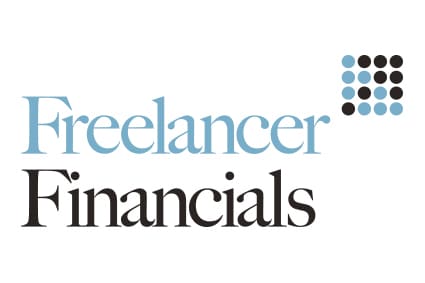With over 15 years of experience, Freelancer Financials is an award-winning provider of bespoke contractor mortgages and has helped thousands of contractors secure mortgages. Please leave your details and one of their friendly experts will be in touch.
How to write an effective LinkedIn Profile
LinkedIn used to be seen as the Facebook of the professional world; something of a grown up social media channel for those who liked the idea of transporting their Filofax and list of contacts into web format. As of August 2018, LinkedIn has over 560 million members.
Not only has it become an essential business tool, but it is also a place where recruiters source talent. Most recruiters have a premium LinkedIn account which allows them to contact LinkedIn members regardless of them being part of their network or not. This is a very common way for them to source / headhunt candidates for jobs but surprisingly, many people remain in ‘Facebook mode’ and if they don’t know the person that is contacting them, they dismiss the In-mail or connection request. This is a bad move – the person contacting you might be a recruiter wanting to talk to you about a great contract or it might be a potential client wanting to do business.
Embrace LinkedIn and use it as a tool for finding a contract and interacting with potential (and existing) clients. Think of it this way, your LinkedIn profile is your window to the outside world and (you’ll like this one) statistically 85% of those who make hiring decisions will view your LinkedIn profile before doing so. I’ll repeat that……85% of those who make hiring decisions will view your LinkedIn profile before doing so!!
Imagine the scenario, you send your CV to a client, maybe you’ve spent a couple of hours tweaking it for the role, maybe you’ve invested in having it professionally authored; anyway, the client likes what you have to say and decides to put you on the shortlist; they then go to your LinkedIn profile to ‘check you out’ and what do they see? Someone with a partially completed profile, no photo and 2 connections OR someone with a complete and well written profile with 500+ connections who is obviously LinkedIn savvy and who knows how to use it in the workplace?
Guess which candidate gets the interview!
Now these are examples at either end of the spectrum – example one is clearly bad and example two is what you aspire to, but there is definitely a bare minimum of making sure your LinkedIn profile is complete, well written and dovetails with your CV without being a complete copy and paste job.
The bottom line is, if you are looking for contract work, you must have a LinkedIn profile that is as representative of your abilities as a good website would be for any reputable company.
Here are some important points to consider when creating your profile:
Linkedin Professional Headline
Don’t just put your current job title in the Professional Headline section. This is the bit under your name by the way. Try to incorporate what you will do for a client or in other words, capture your value proposition. For example, my Professional Headline might read “Personal Branding Specialist and expert in helping Contractors win more work”. This is much more of a value proposition that “Managing Director of The CV & Interview Advisors”. It explains to my potential clients what I / we can do for them and gives them a reason to interact with me. Our Marketing Manager might have something like “Marketing Manager adept at creating low cost marketing strategies that drive superior ROI for SMEs” – how much more powerful is this than “Marketing Manager at The CV & Interview Advisors”?.
Linkedin Summary
This section is designed to tell people what you are, what you are good at and what you can potentially do for them. You can also pop in here information about your status as a Contractor as well as injecting some information about your philosophy and ethos towards your profession.
Make sure your Summary captures your headline skills and walks the reader through how these skills will benefit their organisation. Don’t just pick any old skills; it is important to present the skills you have which are in line with the hot skills in your market place. For example, an Operations Director should be mentioning skills such as ‘developing operational infrastructure to drive service levels and cost efficiency’, and a Project Manager should consider skills such as ‘driving stakeholder engagement to smooth the path for successful project delivery’. If you don’t know the hot skills in your market place, you are not in a position to write an effective LinkedIn profile (or a CV), so consider getting some professional help.
Here’s an example of a Profile that is well written and captures all the key points:
I have operated at Senior Executive level for many years, combining my skills as a Board-level executive and inventor to build highly profitable £multi-million engineering businesses from start-up or seed capital. I am adept at creating first-to-market products, leading the end-to-end development of these products from concept to market, driving demand in new and existing markets and overseeing the operational management of business activities to drive revenue and profit.
I am most at home operating at Board level, driving both top and bottom line performance in medium sized engineering / tech businesses. I am passionate about technology but equally passionate that solutions should have commercial longevity; I consider myself adept at identifying market trends and making sure that Cap-Ex investment in new products results in long term ROI.
Having just exited my recent business (XYZ Ltd), I am now seeking Interim, Consultancy or Non-Executive Director positions.
You can then add in a selection of key skills. LinkedIn used to have a Specialities section until early 2012 but removed this to give users more choice. I would recommend manually adding this in but instead of calling it Specialities (which is a rather odd term), I would call it Key Skills or Areas of Expertise. This could be something like:
Linkedin Key Skills / Specialities
P&L Management / Engineering Sector / Business Transformation / Project Management / Licence and Contract Negotiations / Business Strategy Development / Multichannel Development / Change Management / Commercial Due Diligence / Financial Analysis / Leadership, Coaching & Training
Make sure your list of skills provides a menu of all the talents you possess but focus on functional skills rather than behavioural traits. Recruiters / clients get fed up reading about clichéd and contrived personality traits such as ‘working well in a team’ and ‘working under pressure’.
It is fine for this section to duplicate the entries in the Skills section that comes as standard with your LinkedIn profile. This section appears later in the Profile and allows you to add skills that become searchable and that your network is able to endorse you for. This duplication is more reinforcement than repetition as each section is used for different purposes by both user and reader.
Contractor Positions
This is effectively the Career History section of your LinkedIn profile but should be treated differently to your Career History on your CV. If you have read our CV writing guidance, you will understand what I mean by the ‘context-building bullet points’ i.e. description of employer, summary of role, structure of team and KPIs. If you haven’t read this guide, here is a quick overview:
I recommend starting with a series of context building bullet points; context is essential when writing a CV as it helps the reader to conceptualise your role. If you start with a random duty / responsibility, it will have no context and render it ineffective, but if you have good context building information before the duties and responsibilities, it helps the reader to understand the ‘context’ in which you performed those tasks.
Some of these are more relevant to permanent roles than contracts but here are the recommended key ‘context’ building bullet points:
- Information about the organisation that you worked for
- The purpose of your role i.e. a role summary
- If you managed a team, a description of your team size including direct reports
- How your role was measured
When describing your employer or client, explain what industry they are in and how big they are e.g.
- Salesforce.com Inc. is a global software / CRM company headquartered in California. The company has revenues of $3billion and 9,800 employees.
The purpose / summary of your role should capture ‘in a nutshell’ what the scope of your role was. Aim to provide a detailed bullet point that, if no other bullet points existed, would adequately describe what your role was. For example:
- Oversee all IT infrastructure and applications for the US and EMEA across key sites in California, London, Munich, Madrid and Dubai (700 users). Hired with a remit to transform, design and develop business-critical IT services to support aggressive expansion plans.
If you managed a team, understanding who these people were can build context. It allows the reader to picture an organogram of your team in their minds. For example:
- Managed a workforce of 200 people across 3 European sites with 4 direct reports including 2 Operations Managers, Finance Manager and Sales Manager.
Describing your KPIs i.e. how your role was measured also builds context. Think about the tangible and measurable targets that you perform against. Note that this doesn’t apply for every profession and may not be as relevant for some contract roles. If you don’t have clearly defined statistical / measurable KPIs then leave this bullet point out. Having said that, it does apply to most people so don’t trick yourself into leaving this out just because it’s hard to think of something.
Now back to LinkedIn! To apply this theory to LinkedIn, I would recommend using these exact same context building bullet points but slightly expand out the role summary to provide a one paragraph overview of the role and leave out the KPIs (which applies less to contract roles). You are then left with a description of the client (if it’s not obvious who they are), an expanded role summary (3 to 4 lines) and a description of your team, which can be very useful for communicating scale and scope especially if you are a Project / Programme Manager or do any other role where leadership is important.
You can then miss out the traditional CV duties and responsibilities and provide evidence that you have succeeded by listing some of the key projects, initiatives and outcomes that you delivered within the role. It is really important that you are able to communicate your success within the role so make sure you include at least a couple of bullet points that describe the value that you added in the role, ideally incorporating some tangible, measurable and statistical evidence that you succeeded.
For example: ‘delivered a major ERP upgrade across EMEA that save the company £1.2M per annum and improved operational efficiency by 12%.’
Do this for all your key roles / contracts for the last 8 to 10 years; anything prior to this can be popped in as a one liner or with just very brief details about the role.
Projects
The projects section is a great way to showcase some of your bigger projects or achievements.
The Projects section is activated when you are in ‘Edit Profile’ mode (it’s not there by default). You need to access the list of additional sections and add it to your profile.
Note: this same action is used to activate other sections such as Honours and Awards, Training Courses, Certifications and Languages.
In order to write these Projects in the most effective way, we use a formula called STAR, which is an acronym for Situation, Task, Actions and Result. Situation gives background to the example i.e. who were you working for and what situation did they find themselves in; Task describes the extent to your involvement i.e. how you were involved; Actions are the specifics to what you did; and Result is the outcome, ideally in measurable terms.
Example:
In 2001, ERAC acquired an unprofitable competitor in the South of England that required transformation. Appointed as Interim Operations Manager to re-brand the business, embed the ERAC business model and drive profitability. Performed top-to-bottom review of business; exited underperforming staff; recruited new team; trained new and existing staff; oversaw office refurbishment; introduced radical changes to commercial model (7 day p/w operation); and led business development activity. Succeeded in re-branding the business and achieving £10k per month profit within 6 months.
Let’s break STAR down into its component parts:
Situation: This part of the case study should start with the name of the company and go on to explain what the SITUATION was. Another way of looking at it is “what was the problem and what was going wrong”. For example – ‘In 2001, ERAC acquired an unprofitable competitor in the South of England that required transformation’ or ‘XYZ Ltd had weak financial processes that were leading to significant inefficiencies within the accountancy department’.
Task: This is the simplest part of the case study and should mention your job title and how you were involved in solving the problem. All we are trying to do here is to explain in what capacity you were involved. For example – ‘Appointed as Interim Operations Manager to re-brand the business, embed the ERAC business model and drive profitability’ or ‘Engaged as Project Manager to streamline financial processes.
Actions: Here we focus on the 5 or 6 key ACTIONS that you took to solve the problem and drive a positive outcome. It can be looked at as the sequence of events that you followed. Keep the individual points brief, write them in active voice using tight writing and separate them by semi-colons. For example: Performed top-to-bottom review of business; exited underperforming staff; recruited new team; trained new and existing staff; oversaw office refurbishment; introduced radical changes to commercial model (7 day p/w operation); and led business development activity.
Result: This is the most important component to the STAR case studies – without the RESULT, the case study will just be a list of tasks rather than something that you achieved.
The Result should ideally be statistical, using some kind of tangible evidence that proves that you succeeded. For example – ‘Succeeded in re-branding the business and achieving £10k per month profit within 6 months’ or ‘Succeeded in re-engineering financial processes which reduced man-hours by 15%, saving £10k per annum’. Notice how we start the Result with ‘Succeeded in…’ to separate it from the Actions – this ensures that the case study is easy to read and gives the Result more impact.
Further Examples:
- Magpie Boots Ltd’s EMEA business had a disparate communications network which was expensive and unreliable. Engaged as IT Project Manager to lead major IT transformation programme. Engaged with stakeholders; scoped business requirements; assembled team of 25; led design of new network / infrastructure using xxxxxxxxxx technologies; selected and managed 3rd party vendors; led through testing and implementation; and introduced 24/7 FTS support capability. Succeeded in delivering and EMEA-wide infrastructure with robust DR capability and a converged data and telecoms network which saved £1M per annum.
- In 2006, XYZ Ltd was a 3-year-old recruitment business with high cost base and zero profits to date. Hired as Interim Financial Controller to deliver a critical cost rationalisation programme. Performed business audit; revised company’s operating model; reviewing and re-negotiated contracts with clients; rationalised supplier base; implemented new expenses policy; and made significant changes to employee remuneration. Succeeded in reducing costs by £200k (18%) which allowed the company to achieve profit for the first time.
Recommendations
Recommendations are what we used to call Testimonials – they provide an opinion of your talents by individuals in your network. If you are looking for a compelling reason to ask your network for recommendations, you might be interested to know that LinkedIn cites a statistic that you are three times more likely to be contacted about a contract opportunity, if you have recommendations in your profile, than someone who has not. The ideal scenario is to have a 360 portfolio of recommendations for each position – something from a boss / client, something from a stakeholder, something from a peer and something from a subordinate. There is a clear and distinct difference between a generic and poorly thought through recommendation and one where the person writing it put some thought into it; however you will have no control over this so there’s no point losing any sleep over it. Just display the ones that are authentic and well written and leave the others alone.
LinkedIn Banner
The blue area behind your photo is designed to accommodate an image of your choosing. The best way to think of it is like a business card. Your LinkedIn profile will look much more professional if you include a banner rather than leaving it blank. The more people start using this feature, the weaker it will look not having one.
Writing Style and Photograph
LinkedIn is a more informal communication channel than a CV so using the First Person style of writing is more appropriate that the Third Person style that you would use to create a CV. This is an easier style to adopt as pronouns such as ‘I’ and ‘my’ can be used.
And finally, on the theme of the differences between a CV and LinkedIn; whereas it is not the done thing to have a photograph on a CV, it is most definitely a faux pas not to include one on your LinkedIn profile.
If you would like one of our team to critique your LinkedIn profile or CV (free of charge), please send us an email to info@cvandinterviewadvisors.co.uk with some reference to having read this guide and one of our team will contact you. We also provide a range of services for Contractors at discounted Contractor Weekly rates – see here: www.cvandinterviewadvisors.co.uk/contractor-weekly
★ ★ ★ ★ ★
Sign up
Select your business type and sign up for expert news and exclusive offers.




